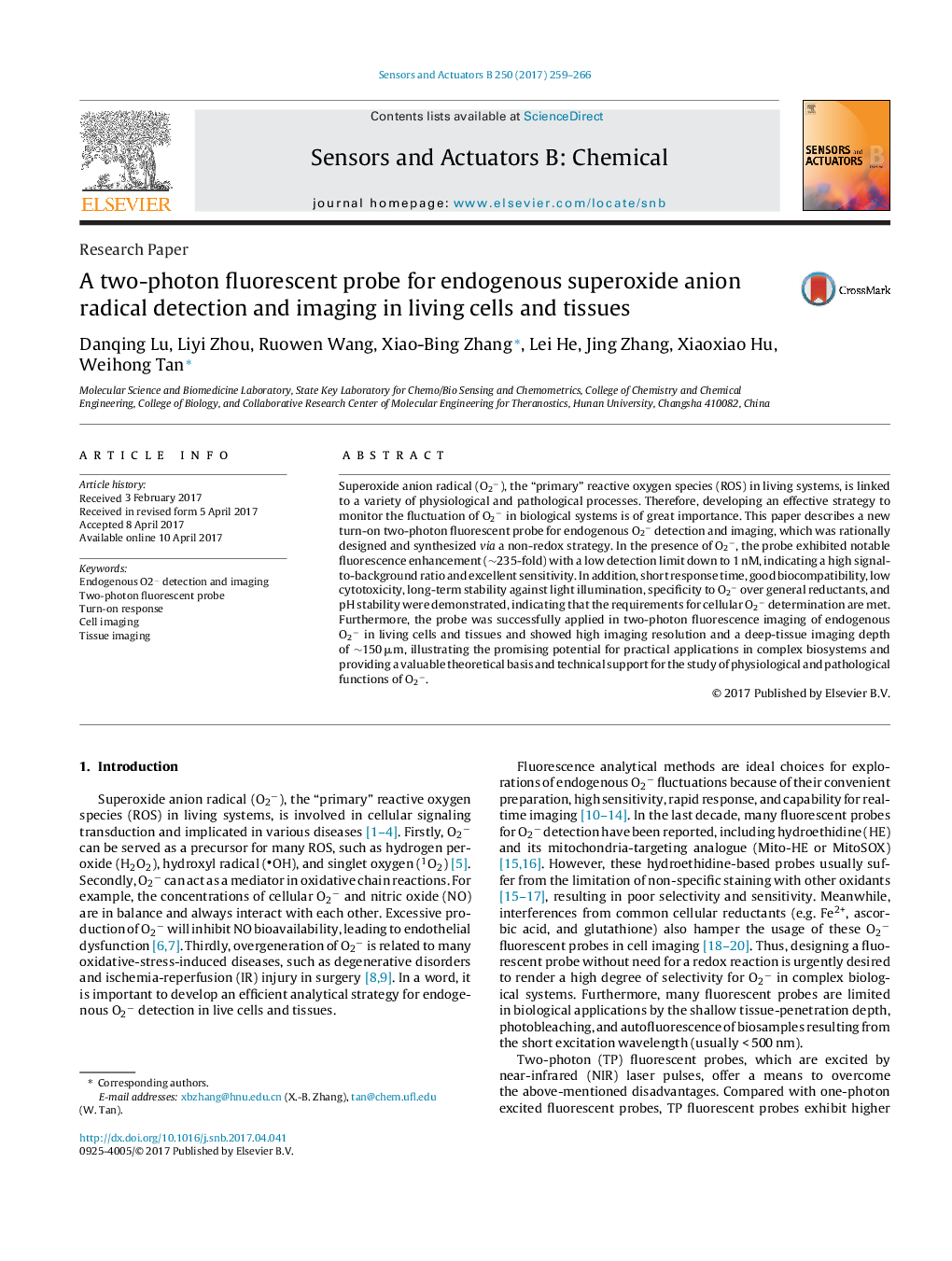| Article ID | Journal | Published Year | Pages | File Type |
|---|---|---|---|---|
| 5008776 | Sensors and Actuators B: Chemical | 2017 | 8 Pages |
Abstract
Superoxide anion radical (O2â), the “primary” reactive oxygen species (ROS) in living systems, is linked to a variety of physiological and pathological processes. Therefore, developing an effective strategy to monitor the fluctuation of O2â in biological systems is of great importance. This paper describes a new turn-on two-photon fluorescent probe for endogenous O2â detection and imaging, which was rationally designed and synthesized via a non-redox strategy. In the presence of O2â, the probe exhibited notable fluorescence enhancement (â¼235-fold) with a low detection limit down to 1 nM, indicating a high signal-to-background ratio and excellent sensitivity. In addition, short response time, good biocompatibility, low cytotoxicity, long-term stability against light illumination, specificity to O2â over general reductants, and pH stability were demonstrated, indicating that the requirements for cellular O2â determination are met. Furthermore, the probe was successfully applied in two-photon fluorescence imaging of endogenous O2â in living cells and tissues and showed high imaging resolution and a deep-tissue imaging depth of â¼150 μm, illustrating the promising potential for practical applications in complex biosystems and providing a valuable theoretical basis and technical support for the study of physiological and pathological functions of O2â.
Related Topics
Physical Sciences and Engineering
Chemistry
Analytical Chemistry
Authors
Danqing Lu, Liyi Zhou, Ruowen Wang, Xiao-Bing Zhang, Lei He, Jing Zhang, Xiaoxiao Hu, Weihong Tan,
